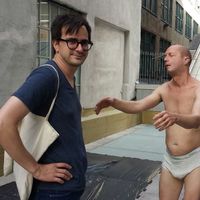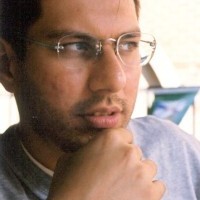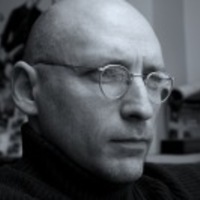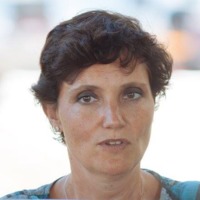Papers by David E Fresko
Senses of Cinema, 2022
An examination of the representation of nature in Jean-Luc Godard's films from the 1960s and earl... more An examination of the representation of nature in Jean-Luc Godard's films from the 1960s and early 1970s.
Metrograph Journal, 2020
An assessment of Robert Kramer's 1960s output.
The Sixties: A Journal of History, Politics and Culture, 2020
This is a review essay of three recently published books on the subject of film and politics duri... more This is a review essay of three recently published books on the subject of film and politics during the Long Sixties.

Screen, 2019
Far from Vietnam (Chris Marker, et al., 1967), though heralded as a major contribution to the his... more Far from Vietnam (Chris Marker, et al., 1967), though heralded as a major contribution to the history of radical documentary and extolled as a cri de coeur about the inability of French intellectuals to sufficiently contribute to the anti-war struggle, has been inadequately understood for the internationalism underlining its politics and the montage employed to achieve it. Its production linked France, the USA, Cuba and Vietnam; its textual shape consolidated its transnational exchanges through montage, which marshalled multiple counter-cinematic techniques to link the real and imaginary addressees of global anti-war publics across cuts generative of new creative cartographies and political subjectivities. Far from Vietnam’s form signalled the counter-cinema that it was while simultaneously calling into the being the counter-public necessary to confront US militarism. As opposed to uncritical evocations of solidarity, which elide differences between home and abroad, the essay concludes by arguing that Far from Vietnam, much as its title suggests, realizes and questions international political praxis’s stability as a category of thought and action.
The Global Sixties in Sound and Vision, 2014

Animation: an interdisciplinary journal, 2013
Though widely known for his contributions to instantaneous photography and studies of human and a... more Though widely known for his contributions to instantaneous photography and studies of human and animal locomotion, the figure of Eadweard Muybridge was equally renowned during the final decades of the 19th century for his tours of the magic lantern circuit. At this time, the photographer entertained and educated audiences with a poly-generic, multi-media show alternating still views with animations produced through his projecting apparatus, the zoopraxiscope. This article examines the temporal and material dimensions of Muybridge's lantern practice to demonstrate how it builds on 19th-century anxieties about changing epistemologies of vision and visuality, as well as time and temporality. As a dynamic process animating still images into motion, Muybridge treated animation as a palliative measure designed to bring his ungainly images of animals back into the realm of natural human vision. In so doing, he bred truth through illusion and helped prepare audiences for an emerging cinematic sensibility. By emphasizing the temporal dimensions of photographic indexicality, the author further argues that Muybridge's endeavors amount to an archive of time, and that his lantern slides evince time made material. While the slides' projection displayed a virtual immateriality, an examination of broken ones reveals that photographic beauty emerges from their ephemerality and fragility. The animating interchange between stillness and motion, between the material and the immaterial, functions as an indicator of the emergence of epistemic assumptions and anxieties about time and sight that took hold as cinema emerged.
Reviews by David E Fresko

JCMS, Mar 1, 2023
Reading Daniel Fairfax's The Red Years of Cahiers du cinéma (1968-1973), a spirited, brilliantly ... more Reading Daniel Fairfax's The Red Years of Cahiers du cinéma (1968-1973), a spirited, brilliantly researched, and cogently written reevaluation of the militant period of the world's most famous French-language fi lm magazine, is to be reminded of a time when fi lm theory, practice, and politics were conceived as one. The year 1968 has long been mythologized in France as a rupture that brought the country to the brink of revolution and radicalized a generation; it also transformed French fi lm criticism into a political enterprise above all through the eff orts of Cahiers du cinéma. While the narrative of Cahiers du cinéma's revolution from an avatar of postwar cinephilia, which launched the careers of François Truff aut, Claude Chabrol, Jean-Luc Godard, Éric Rohmer, and Jacques Rivette as part of the French New Wave, into a radical organ of ideological struggle by the end of the 1960s is well known, it has only been available in piecemeal fashion to Anglophone readers. Fairfax not only synthesizes preexisting literature on the subject in French and English but also provides the opportunity to assess anew the theoretical nuances of this attempt to create a Marxist materialist theory of cinema and society. To this end, Fairfax addresses three key questions about Cahiers du cinéma's political project. First, how did it attempt to intervene in its contemporary historical moment? Second, how did it help shape the
InVisible Culture: An Electronic Journal for Visual Culture (IVC), 2013
Curatorial by David E Fresko
Eight week film series at the George Eastman Museum's Dryden Theater, curated by Ryan Conrath and... more Eight week film series at the George Eastman Museum's Dryden Theater, curated by Ryan Conrath and David Fresko. For more information see: https://eastman.org/film-series/here-and-elsewhere











Uploads
Papers by David E Fresko
Reviews by David E Fresko
Curatorial by David E Fresko